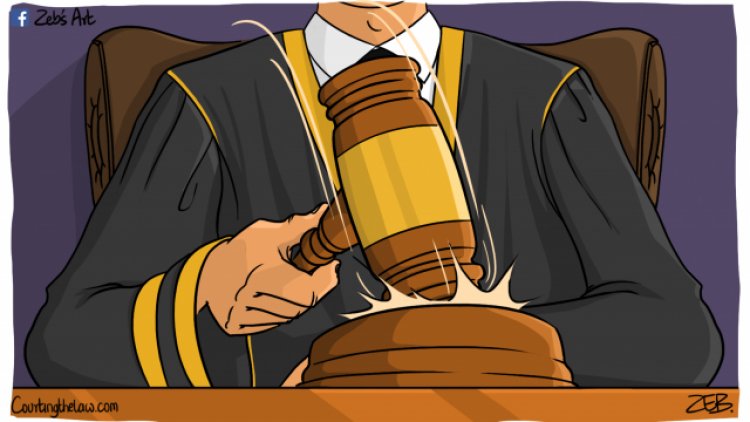Judicial Review of Administrative Actions of the Judges of Superior Courts

All public functionaries must exercise public authority, especially when dealing with public property, public funds and assets, in a fair, just, transparent and reasonable manner, untainted by mala fide intent, without discrimination and in accordance with the law.
“The Courts not only are vested with the jurisdiction to set aside such actions but any failure in such an eventuality to exercise power of judicial review, when invoked, would make the court a party to such unfair, mala fide and illegal action.”[1]
Articles 199 and 184(3) of the Constitution of Pakistan 1973 provide the High Court and the Supreme Court with original jurisdiction to keep a check on the administrative actions taken by public functionaries in order to make sure that such actions are not being performed in a discriminatory or arbitrary manner. While superior courts may fervently exercise jurisdiction in matters of public importance under the garb of Articles 199 and 184(3), the Supreme Court in its five-member larger bench decision on 15th March, 2020[2] has trimmed this power from being exercised by a High Court when the same is to be exercised with regard to an administrative decision/action of a judge of the High Court or Supreme Court.
One of the most pertinent questions arising at this point is whether a High Court has competence to issue a writ against itself or one of its judges or a judge of the apex court. Clause 5 of Article 199 provides a solution to this query which operates by barring the High Court from issuing any writ to or against the High Court or Supreme Court, but then a more significant question arises regarding the sort of decisions of superior courts which are immune from writ under clause 5 of Article 199. Moreover, does this clause provide protection to the judges of the High Court and Supreme Court with regard to their judicial decisions only or does it cover administrative decisions/actions as well?
The terms “High Court and Supreme Court” in clause 5 of Article 199, until 2016, had been given a broader meaning. Through multiple decisions of the High Courts, blanket immunity had been provided to the decisions/actions of judges of superior courts even when they were made while acting administratively and had not been judicial in nature.
The Lahore High Court in the case Asif Saeed versus Registrar Lahore High Court[3] took the view that it was clear that the Supreme Court of Pakistan had also been excluded from the definition of the word “person”, along with the High Court. Undoubtedly, it was inconceivable that the order of the Supreme Court from its judicial side could be challenged before the High Court under a writ, irrespective of sub-article (5). If the interpretation of the petitioners was to be accepted regarding whether the administrative order of the High Court in a writ could be challenged, then the same rule would also apply to the Supreme Court. If a situation were to arise where a full court of the apex forum took a non-judicial decision, then on the basis of the above reasoning a single judge might have issued a writ to quash the same, which would just be preposterous. If the same rule was allowed to prevail, rules made by the Supreme Court under Article 191 and by the High Courts under Articles 203 and 208 would not be free from attack and would be subject to everyday litigation leading to a hazardous situation.
While declaring Asif Saeed versus Registrar Lahore High Court and Muhammad Iqbal etc versus Lahore High Court through Registrar etc[4] to be per incuriam and not good law, a three-member bench of the Supreme Court presided over by Justice Amir Hani Muslim[5] opted to take a strict view of clause 5 of Article 199 and declared after significant deliberation that the clause was “…only protecting judicial decisions of the High Courts and Supreme Court and not administrative decisions/ actions….The Constitution confers judicial powers on the High Court only under Article 199 and the administrative, consultative or executive powers are conferred by virtue of the rules framed under Article 208.”
The court also highlighted that Article 199(5) excluded a “High Court and Supreme Court” from the definition of ‘person’. High Court had been defined under Article 192 and the definition did not include the Registrar or any other officer of a High Court establishment appointed by the Chief Justice or the Administration Committee under the High Court Rules. The executive or administrative powers conferred upon the Chief Justice or an Administration Committee had been drawn from the Rules, whereas the judicial powers (jurisdiction) conferred upon the High Court and exercised by the judges had been provided in Article 199 itself, hence, both powers were different and unparalleled. The bench ruled that the provisions of Article 208 which empowered the High Court or the Supreme Court to frame Rules for their establishments had been completely overlooked, as a result of which judicial powers and the powers which were administrative or executive in nature had been mixed up, leading to the denial of remedy to an aggrieved person in a case where codal formalities and other mandatory requirements had been blatantly disregarded.[6]
The Supreme Court took the view that by excluding a High Court and the Supreme Court from the definition of ‘person’, the framers of the Constitution had envisaged judicial jurisdiction and not extraneous administrative/executive/consultative matters pertaining to the establishment of courts.
Earlier, the august Supreme Court in Mian Jamal Shah versus The Member, Election Commission, Government of Pakistan, Lahore etc,[7] while reversing the judgment of the erstwhile High Court of West Pakistan, Lahore, held that a Constitution Petition would be competent against the judge of a High Court acting as a Member of the Election Tribunal for a decision on election disputes, as while doing so he would not be acting as a High Court judge but a persona designate.
Later, in the matter of Abrar Hassan v. Government of Pakistan and others,[8] in which a practising lawyer had challenged the appointment of Justice Abdul Kadir Shaikh as the Chief Justice of the High Court of Sindh and Balochistan while he was a permanent judge of the said court, the issue was whether or not a writ of quo warranto could be issued. Chief Justice Muhammad Yaqub Ali and Justice Anwarul Haq were of the view that a writ of quo warranto could not be issued against a judge, whereas Justice Salahuddin Ahmed and Justice Muhammad Gul were of the contrary view and held that a writ of quo warranto could be issued against a judge of a superior court.
Now when a larger bench of the Supreme Court has reversed the principle laid down in paragraph 45 of Ch. Muhammad Akram versus Registrar, Islamabad High Court,[9] does this mean that the administrative/consultative/executive decisions of the judges of High Courts and Supreme Court cannot be challenged at any forum? The answer to this question has been provided in numerous judgments of the apex Supreme Court which is that such decisions are still challengeable but now directly before the august Supreme Court through its original jurisdiction provided under Article 184(3) of the Constitution of Pakistan after fulfilling the two sine qua non, primary, foundational and fundamental conditions for the exercise of power provided under Article 184(3).
The Constitution makers have conferred powers “to issue such directions, orders, or decrees as may be necessary for doing complete justice” only to the Supreme Court under Article 187 of Constitution and not the High Courts. The power to render “complete justice” has been vested in the Supreme Court alone. The High Court is a creature of the Constitution and can only exercise the powers vested in it under the law.[10]
The decision of the larger bench, from one view, seems to be the need of the hour to maintain discipline in the High Courts as it may avoid any possible situation wherein a High Court judge may pass an order against a fellow judge on the basis of a difference of opinion over a matter. The principle of maintaining comity among the judges of superior courts also favours this stance. From another view, the decision seems to provide complete immunity to Chief Justices and judges of Administration Committees if they pass arbitrary or unfair administrative/executive orders as no judicial review will be available against them under Article 199. It is therefore submitted that the High Courts’ administrative powers should remain subject to judicial review in order to serve as a check on arbitrariness. After all, judges are not infallible.
The matter holds immense importance as it relates to one the most cherished remedies available against executive/administrative decisions based on arbitrariness in order to keep them in check. The decision may also have very serious implications in various matters including the formation of benches. The Supreme Court in the last decade has decided in favour of as well as against this remedy while interpreting Article 199(5). Looking at the history of the changing interpretation of the clause with changing regimes in the Supreme Court, it sounds reasonable for a full court to be convened to settle this point once and for all.
References
[1] PLD 2014 SC 47 [Habib Ullah Energy Ltd versus WAPDA]
[2] https://tribune.com.pk/story/2177619/1-sc-rules-judges-administrative-order-cant-challenged
[3] PLD 1999 Lah. 350
[4] 2010 SCMR 632
[5] PLD 2016 SC 961 [Ch. Muhammad Akram versus Registrar, Islamabad High Court]
[6] Ibid.
[7] PLD 1966 SC 1
[8] PLD 1976 SC 315
[9] PLD 2016 SC 961
[10] PLD 2014 SC 1 [Dossani Travels PVT LTD vs Travels Shop PVT LTD]
The views expressed in this article are those of the author and do not necessarily represent the views of CourtingTheLaw.com or any organization with which he might be associated.

 Admin
Admin 































